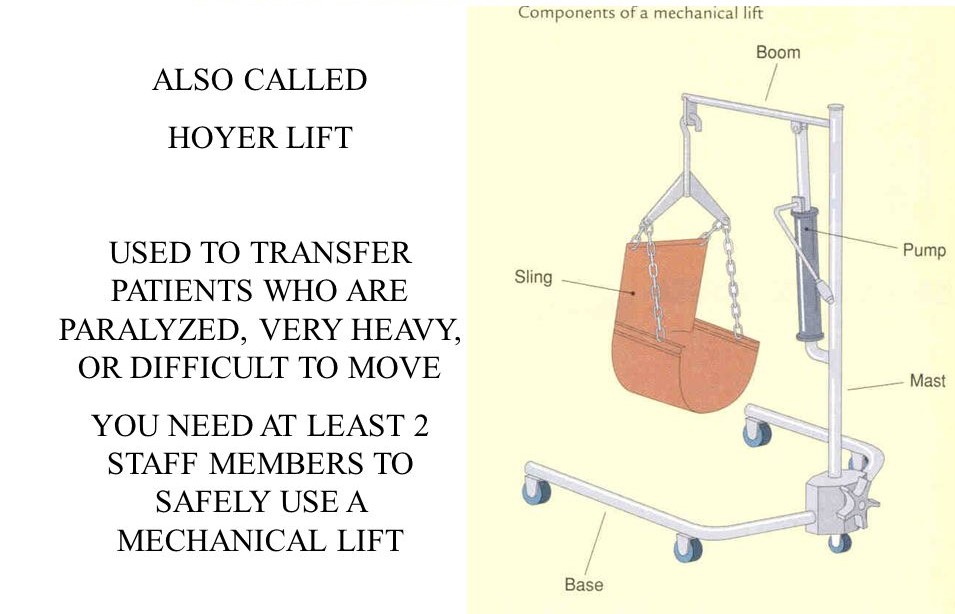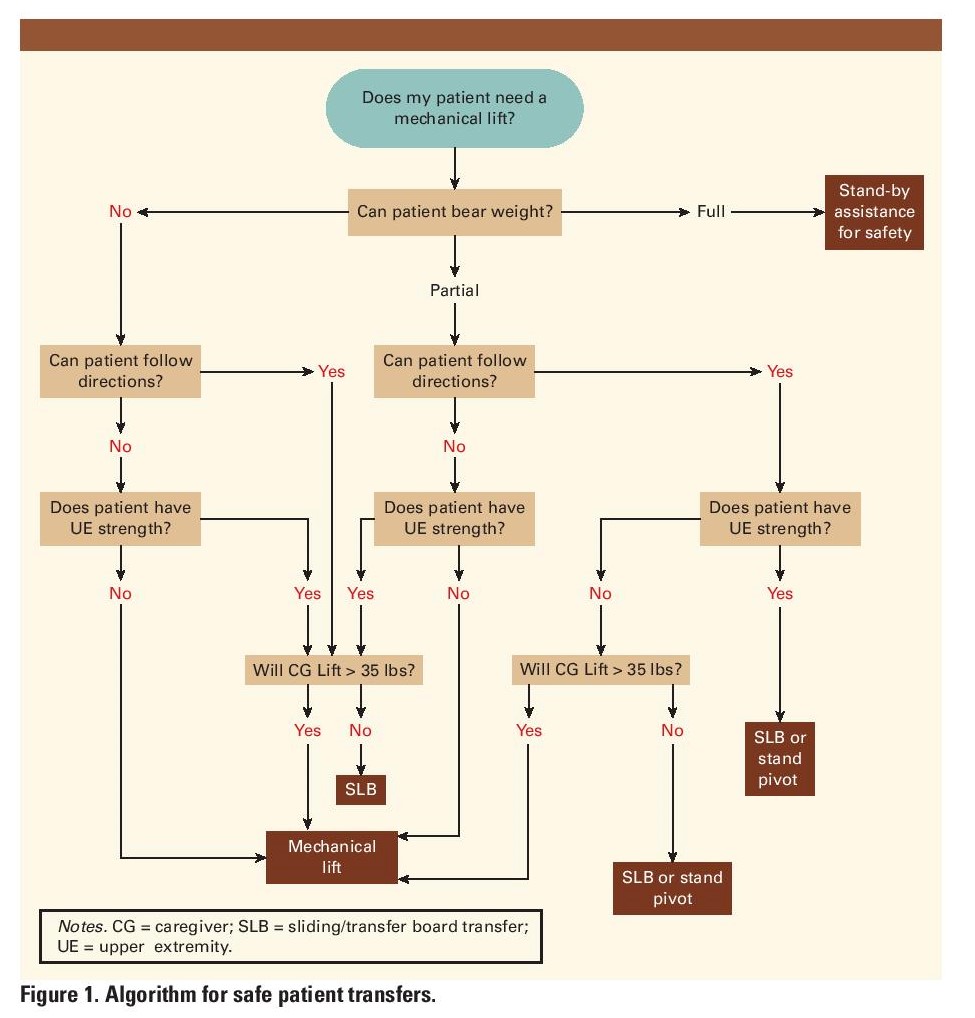………………………
When to use a mechanical lift to transfer a patient:
A mechanical lifting device is most commonly used to move those patients who present with the following challenges:
Ability to Weight-Bearing
If the patient is capable of independent weight bearing, then the use of a lift is not indicated.
If the patient is incapable of weight bearing e.g. Double Amputation, then the use of the mechanical lift is essential.
If the patient is partial or non-weight bearing, he or she may be a candidate for a mechanical lift, depending on further considerations including the ability to follow directions and the degree of UE strength.
Ability to Follow Directions
The cognitive capacity of the patient to comprehend and follow directions is another factor to consider when determining the safest method for transferring a patient. The ability to follow directions includes the willingness to cooperate as well as the physical capability to follow directions. Patients with conditions prone to sudden movements or spasms, such as those with neurological conditions, may be cognitively able and willing to assist but have no control over their physical ability to follow directions – unpredictable movements increase the risk of injury to the patient as well as the clinician.
Use of Upper Extremities
To determine is the patient is able to use their arms to assist with a transfer. Not only should the patient’s strength be assessed, but the clinician should assess if there is any pain with UE weight bearing that would prevent the patient from using their UE.
Patients with partial UE strength who struggle to transfer using the stand-pivot technique or a slide board, would require the use of a mechanical lift.
Medical conditions
For patients with Stage III or IV pressure ulcers, care must be taken to avoid shearing force. Using a mechanical lift to transfer the patient is a strategy to reduce harmful friction.
Weight of the patient
If the clinician is required to bear more than 35 lbs of the patient’s weight, and the patient is unable to use his or her UE to use a transfer board, the patient is a candidate for the use of a lift. The National Institute for Occupational Safety and Health (NIOSH) recommends the use of assistive technology including the use a lift if it is likely that the caregiver/clinician will lift more than the maximum limit of 35 lbs of the patient’s weight for patient handling.

